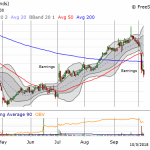As contrarian investors and students of group-think crowd psychology, we look for investment opportunities in the way news is framed. There is an old Mark Twain saying, “Lies, damned lies and statistics.” We believe investors are getting mislead by statistics surrounding the U.S. economy and we will seek to dispel erroneous assumptions in search of long-term gains in the stock market.
The Middle Class
A recent CNBC website article reported an interesting statistic. It explained that 70% of Americans believe they are part of the middle class.1 Pew research indicates that family income levels show that 50% of the population is middle class, down from 61% in 1970. How does the media frame this information?
First, the nationwide income levels don’t take into consideration where in the U.S. people live. An upper-class income in an expensive coastal city could result in a much lower-quality lifestyle than the same income does nationwide. An income at the top of the lower class in an extremely inexpensive area could throw off a middle class living style. Also, some people with higher incomes and higher savings rates live way inside their means, a spending pattern similar to those in the middle class. Hence, the mental classification.
Second, the media and political class have viewed the loss of 11% of the families out of the middle class as an indictment of our democratic capitalist economic system. What they fail to mention is that 7% of the 11% went to upper class and 4% were added to lower class. We are in the camp which abhors anyone being left out, but this shouldn’t be framed as a negative overall.
The U.S. Birth Rate
In a surprise to demographers, total U.S. births have been flat for two years, despite a significant increase in birth rates among women 30-45 years of age. The framers of news are starting to question if our national birth rate will ever break away from the patterns of other industrialized nations like a Germany, France, and Japan, whose rates are way below the replacement level needed to maintain population. The crowd is bearish on household formation and industries affected by the statistics.







Leave A Comment